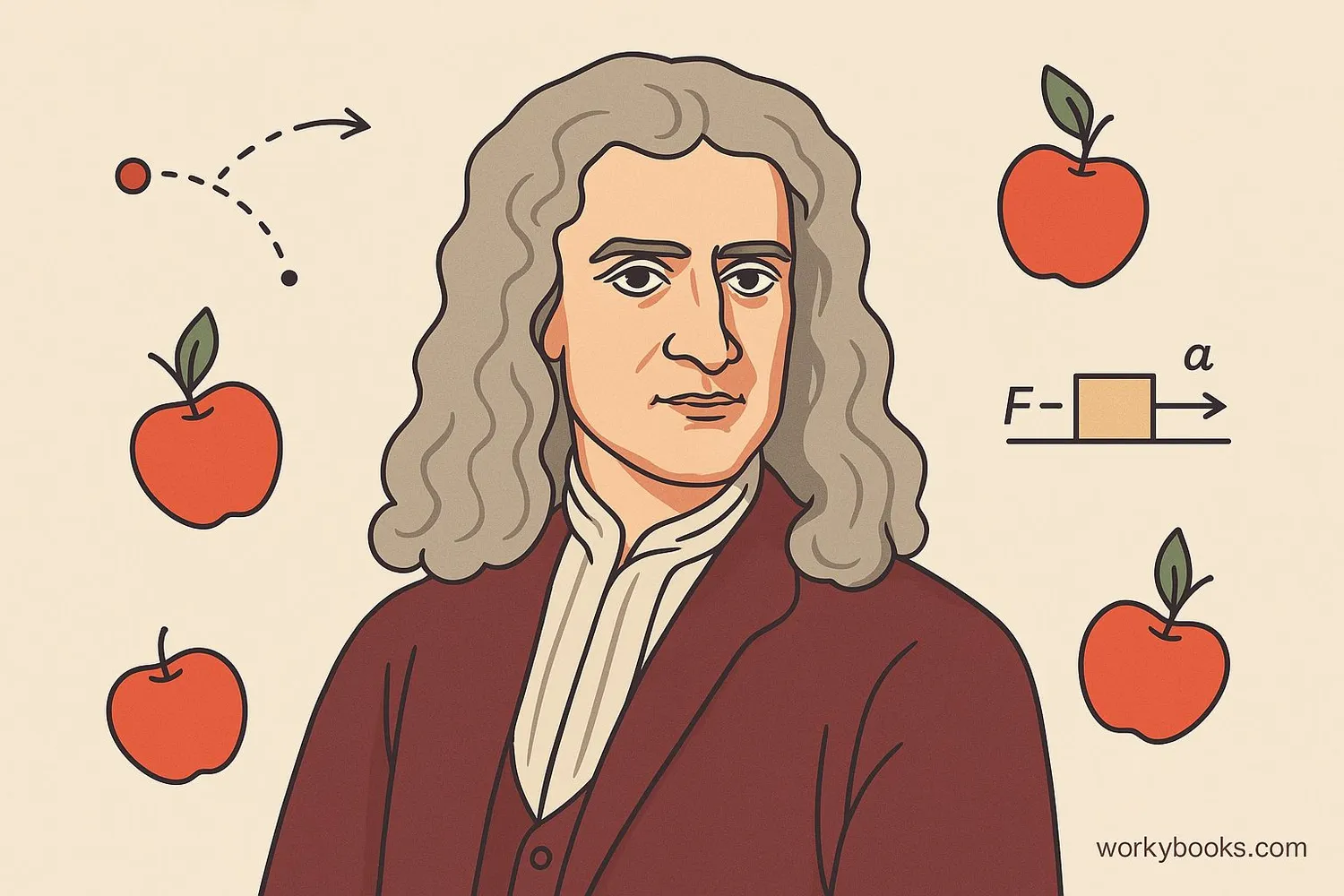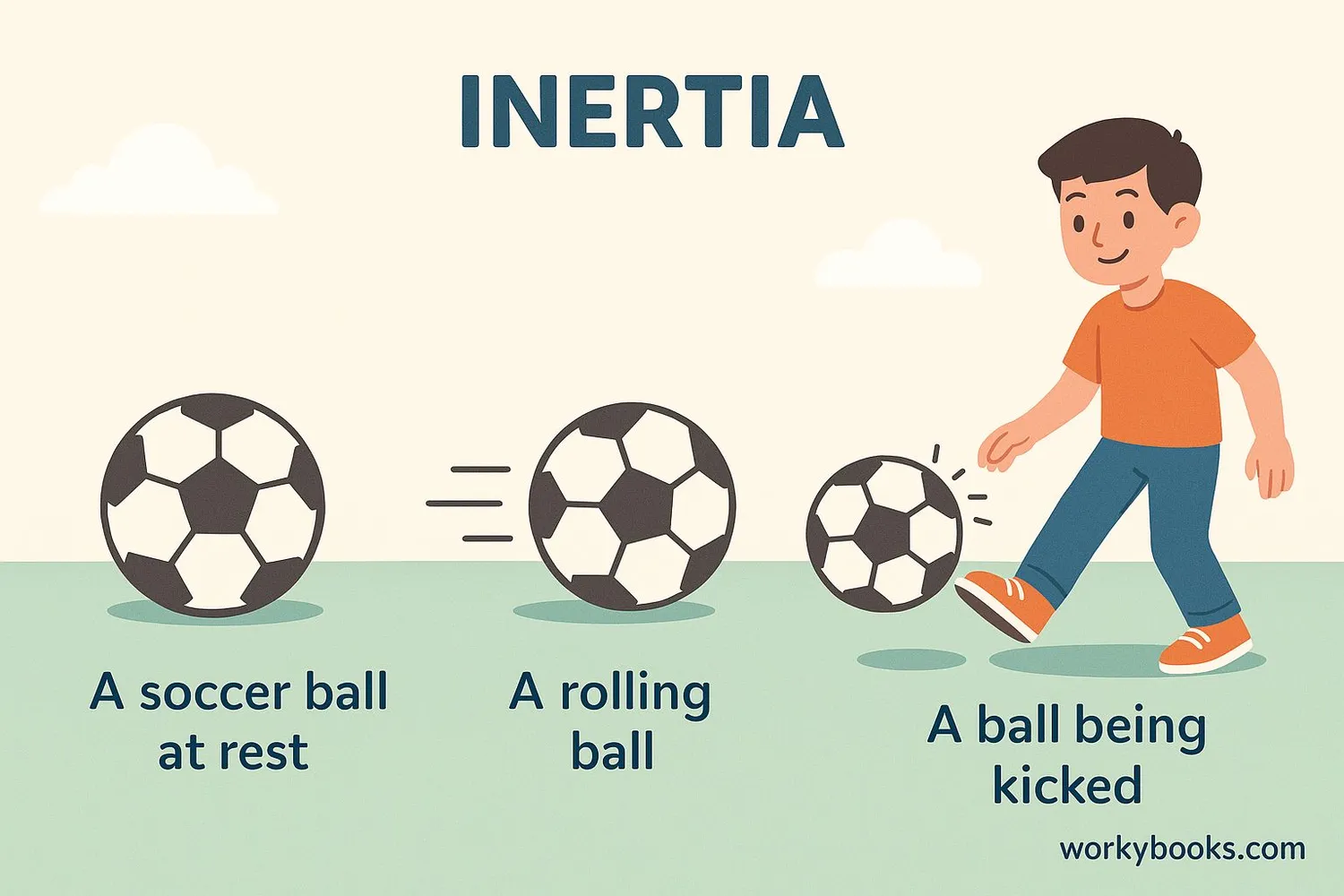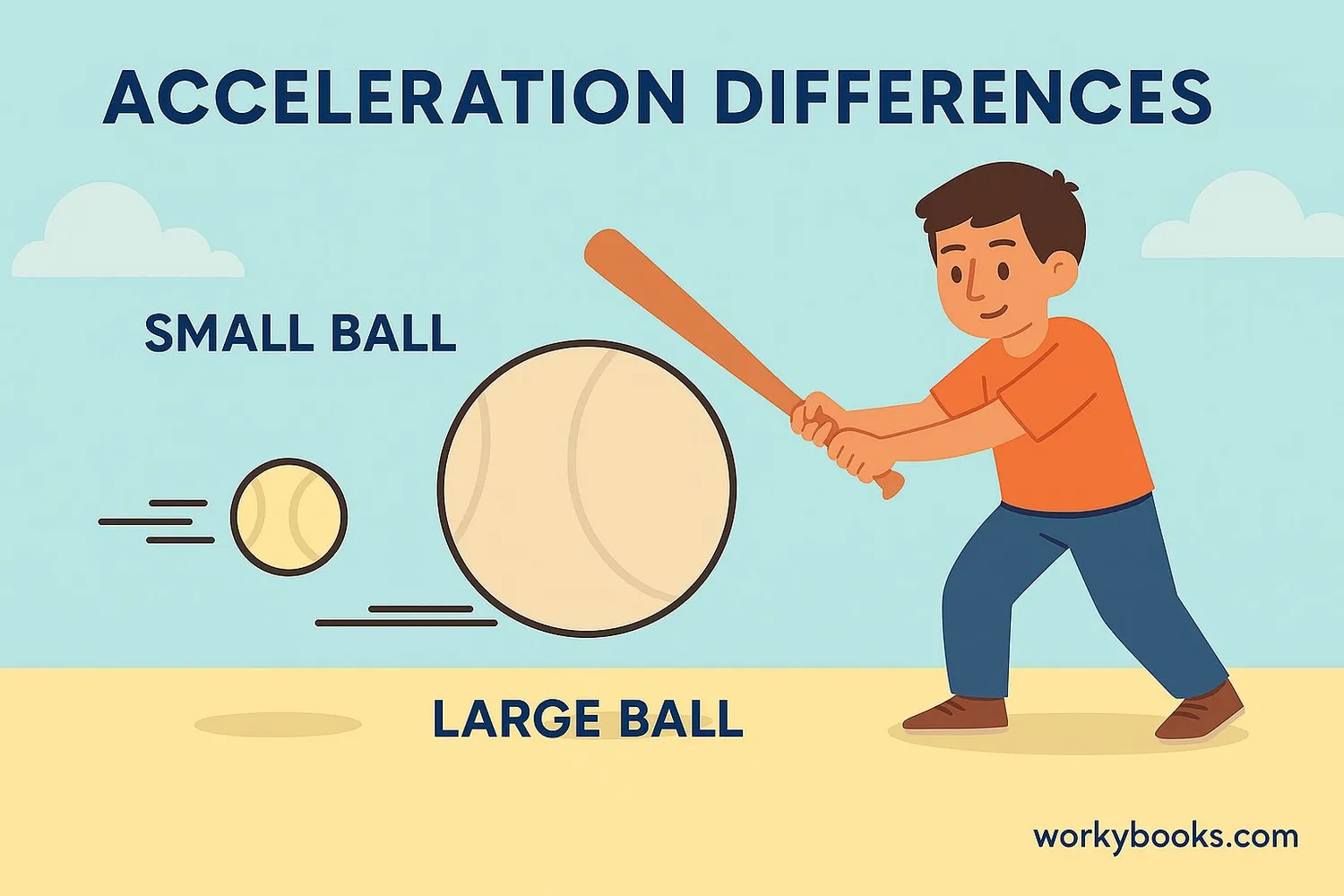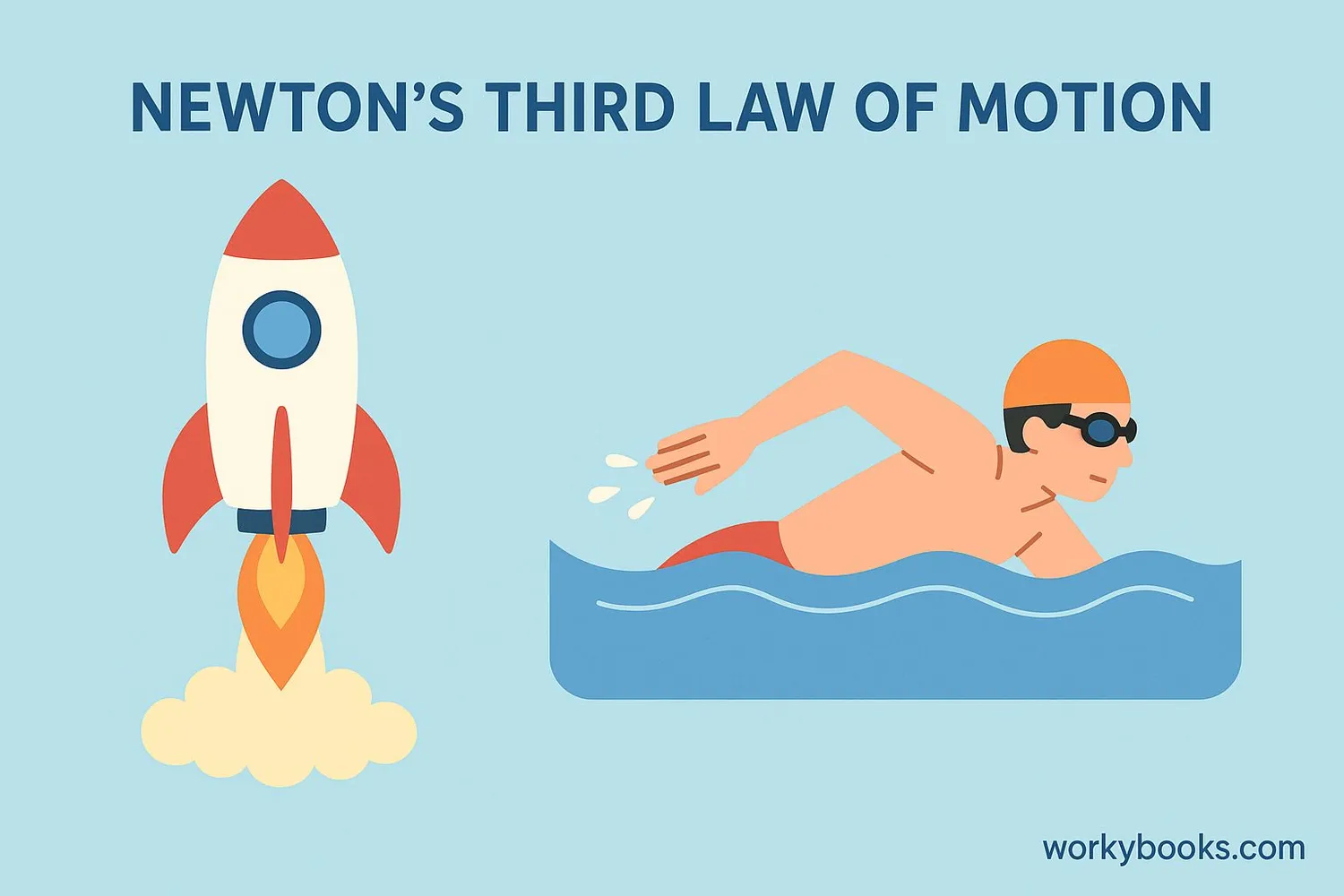Newton's Laws - Definition, Examples, Quiz, FAQ, Trivia
Discover how forces make things move, stop, and change direction
Introduction to Newton's Laws

Sir Isaac Newton was a brilliant scientist who discovered three important rules about how things move. These rules, called Newton's Laws of Motion, help us understand everything from why a ball rolls to how rockets fly into space!
Newton's Laws explain the relationship between force and motion. A force is a push or pull that causes something to move, stop moving, or change direction. These laws help scientists and engineers design cars, planes, and even roller coasters!
Did You Know?
Newton published his laws in 1687 in a book called "Mathematical Principles of Natural Philosophy." These laws are still used today, over 300 years later!
First Law: Law of Inertia

Newton's First Law is also called the Law of Inertia. It states:
"An object at rest stays at rest, and an object in motion stays in motion with the same speed and in the same direction unless acted upon by an unbalanced force."
This means that things don't start or stop moving by themselves. They need a push or pull (force) to change their motion. Inertia is the tendency of objects to resist changes in their motion.
Seatbelts
When a car stops suddenly, your body keeps moving forward. Seatbelts provide the force to stop you.
Tablecloth Trick
When you pull a tablecloth quickly, dishes stay in place due to inertia.
Space Travel
In space, objects keep moving without stopping because there's no friction to slow them down.
Inertia and Mass
The more mass an object has, the more inertia it has. That's why it's harder to push a heavy box than a light one!
Second Law: Force and Acceleration

Newton's Second Law describes how force affects motion. It states:
"The acceleration of an object depends on the mass of the object and the amount of force applied."
This law gives us the famous equation:
F = m × a
Which means: Force = mass × acceleration
This means two important things:
1. The more force you apply to an object, the more it accelerates (changes speed)
2. For the same force, heavier objects accelerate less than lighter objects
Units of Force
Force is measured in Newtons (N). One Newton is the force needed to accelerate 1 kilogram of mass at 1 meter per second squared (1 m/s²).
Calculating Force
Example 1: What force is needed to accelerate a 2kg ball at 3m/s²?
F = m × a = 2kg × 3m/s² = 6 Newtons (N)
Example 2: A 50N force accelerates a skateboard at 5m/s². What's its mass?
m = F ÷ a = 50N ÷ 5m/s² = 10kg
Third Law: Action and Reaction

Newton's Third Law is probably the most famous. It states:
"For every action, there is an equal and opposite reaction."
This means that when one object exerts a force on a second object, the second object exerts a force of equal strength in the opposite direction on the first object. Forces always come in pairs!
Action Force
The initial force applied by object A to object B
Reaction Force
The equal force applied by object B back to object A
Opposite Direction
The reaction force is always in the opposite direction
Real World Examples
Rockets: The rocket engine pushes exhaust gases down (action), and the gases push the rocket up (reaction).
Swimming: You push water backward with your arms and legs (action), and the water pushes you forward (reaction).
Walking: Your foot pushes backward against the ground (action), and the ground pushes your foot forward (reaction).
Equal But Opposite
Action and reaction forces are always equal in strength but opposite in direction, and they act on different objects.
Newton's Laws Quiz
Test your knowledge of Newton's Laws with this quiz! Answer all 5 questions to see how much you've learned.
Frequently Asked Questions
Here are answers to some common questions about Newton's Laws:
Newton's Laws Trivia
Discover some amazing facts about motion and forces!
The Apple Myth
Newton didn't "discover" gravity when an apple fell on his head. He did realize that the same force that made apples fall also kept the Moon in orbit around Earth.
Rocket Science
Rockets work perfectly in space because of Newton's Third Law. The force of exhaust gases pushing backward creates an equal force pushing the rocket forward.
Sports Physics
Newton's Laws explain all sports! Baseball pitching (Second Law), ice skating (First Law), and swimming (Third Law) all depend on these principles.
Car Safety
Airbags and crumple zones in cars are designed using Newton's Second Law. They increase stopping time, which reduces the force on passengers during a crash.


